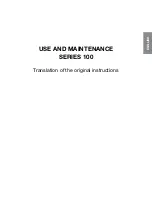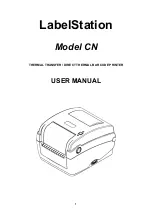
56
COMMENTS ON BAKING
1. Ingredients
As each ingredient has a particular role in the success of
bread-making, the measuring is important as the correct
order of adding ingredients.
The important ingredients, such as liquid, flour, salt, sugar
and yeast (both dry and fresh yeast can be used) affect the
successful results in the preparation of bread and dough.
Therefore always use the appropriate quantities in the cor-
rect proportions to one another.
Use lukewarm ingredients if you are immediately starting
to bake. If the TIME program is to be used, the ingredients
must be cold so that the yeast does not ferment too soon.
Margarine, butter
and
milk
only affect the taste of the bread.
Sugar
can be reduced by 20 % so that the crust will be
lighter and thinner without otherwise affecting the baking
results. Should you prefer a softer and lighter crust, you
can replace the sugar with honey.
Gluten
, that is formed through kneading, provides the struc-
ture of the bread. The ideal flour mixture contains 40%
wholemeal flour and 60% white flour.
Should you wish to add
whole grains
, soften them up over-
night. Appropriately reduce the quantity of flour and liquid
(up to 1/5 less).
Leaven
is indispensable in the making of rye flour bread.
It contains milk and vinegar acid bacteria that cause the
bread to be light and slightly sour. Making it up oneself
takes up quite some time. Therefore we use in the follow-
ing recipes concentrated leaven-dough powder which co-
mes in packs of 15 g (for 1 kg of flour). The quantities in
the recipes (½ - ¾ - 1 bag) must be adhered to cut down
on bread crumbing.
If leaven-dough powder is used in other concentrations,
(packs of 100 g for 1 kg flour), 1 kg flour must be reduced
by 80 g or as appropriate to suit the recipe.
Liquid leaven dough
, available packed in bags, can also be
used well. As far as quantities are concerned adjust to the
details on the packing. Fill the leaven dough into a measu-
ring jug and add the appropriate quantity of liquid menti-
oned in the recipe.
Wheat leaven dough, that can also be bought dried, im-
proves the dough quality, the freshness and the taste. It is
milder than rye leaven dough.
Bake leaven bread in the BASIS or the VOLLKORN pro-
grams, so that it rises and bakes properly.
Wheat bran should be added to the dough when a particu-
larly roughage-full and light bread is required. Use 1 ES
for 500 g of flour and raise the quantity of liquid by ½ ES.
Wheat germ
is a natural helper out of grain protein. It ma-
kes the bread lighter, gives a better volume, sinks less of-
ten and is more wholesome. This is particularly the case
with wholemeal breads and pastries and those made from
self-ground flour.
Colour malt
, which we use in several recipes, is a dark-roa-
sted barley malt. It is used to obtain a darker crumb and
crust (such as black bread). A rye malt is also available
and is not so dark. Such malts are available in whole food
shops.
Bread seasoning
can be added to all mixed breads. The
quantity used depends on the taste and the information of
the manufacturer.
Pure lecithin
powder is a natural emulsion that raises the
baking volume, makes the crumb tender and softer and
prolongs the freshness.
All the above boldly-printed baking substances and ingre-
dients are available in whole food, health food shops and
the health food departments of grocery stores or from flour
mills.
2. Adjusting the ingredients
In cases where certain ingredients are increased or redu-
ced, ensure that the proportions in the original recipe are
maintained. In order to achieve a perfect result, take note
of the following basic rules on adjusting the ingredients:
Liquid/flour:
The dough must be soft (not too soft), slight-
ly sticky and not stringy. Light dough is in a ball, whereas
with heavier dough, such as rye wholemeal or other whole-
meal breads, this is not the case. Check the dough 5 mi-
nutes after the first kneading. Should it be too moist, add
more flour until the correct consistency is achieved. If the
dough is too dry, knead in spoonful by spoonful of water.
Replacing liquids:
Should you replace ingredients in the re-
cipes which contain liquid (such as cream-cheese, yoghurt,
etc.), the appropriate liquid quantities must be adjusted
accordingly. When using eggs, break then into the measu-
ring jug and fill up with liquid to the required level.
If you live high up (above 2,500 ft.), the dough rises more
quickly. In such regions the amount of yeast can be redu-
ced by ¼ to ½ TS, to avoid excessive rising. The same is
the case in regions where soft water is present.
3. Adding and measuring the ingredients and quantities
Always first add the liquid and then the yeast. Only in case
of very heavy dough such as rye bread, we recommend to
fill in first the flour and the dry yeast and to pour the li-
quid on top to ensure proper kneading. However, if this
is combined with the TIME function, make sure, that any
contact between yeast and liquid is avoided until the pro-
gram starts.
In order to prevent the yeast from fermenting too soon (in
particular using the time delay), contact between the yeast
and the liquid must be avoided.
Always use the same units in measuring, which means that
with the indication of tablespoon and teaspoons either use
the measuring spoon supplied with baking automatic or
spoons which are normally used in the household.
Weighing in grams is preferable due to their accuracy.
The supplied measuring jug can be used for millilitres
measurements.
Abbreviations in the recipes mean:
tbsp
= tablespoon (or measuring spoon large)
tsp.
= level tea spoon (or measuring spoon small)
















































